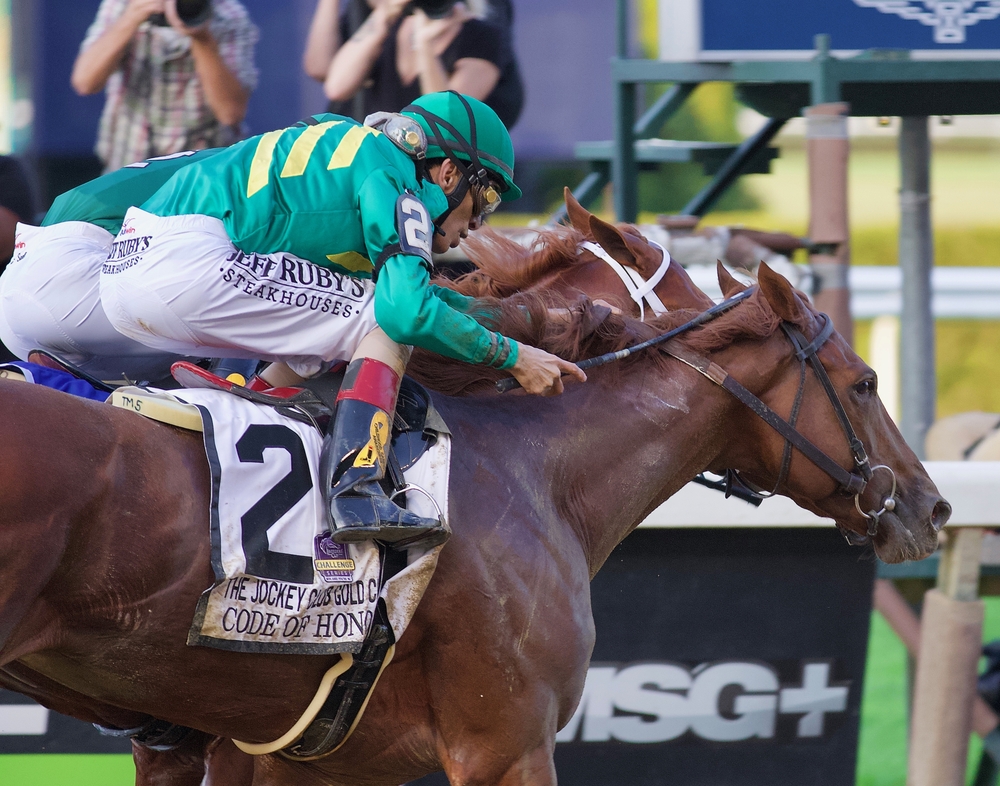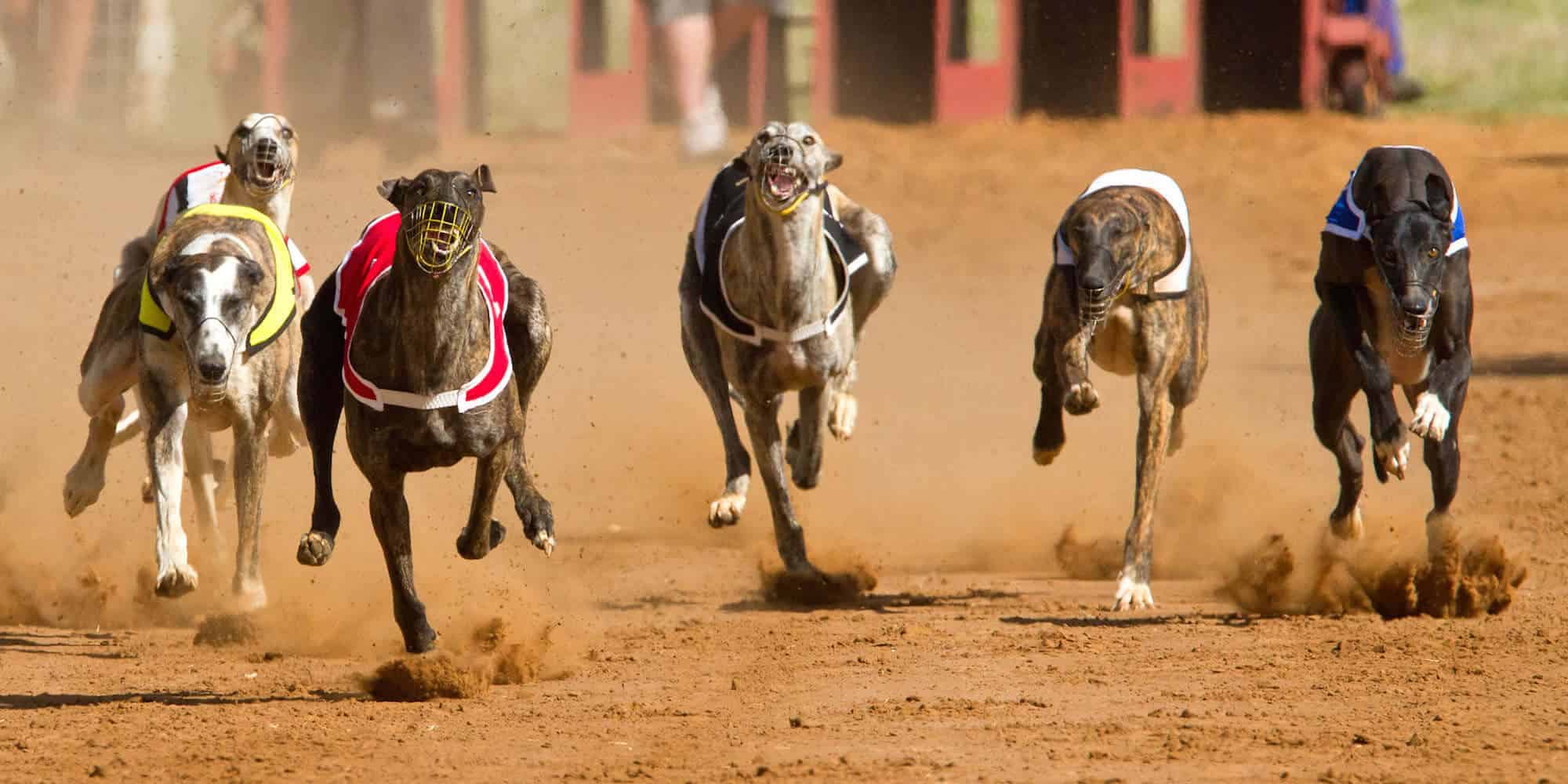The fact that the better horses must carry more weight than those inferior to them gives all the horses, theoretically, the same chance of winning.
Example Of A Handicap Horse Race
Handicap horse races in the United Kingdom and Ireland can have up to 40 runners, though handicaps at many tracks are limited to much smaller fields.
Let’s start with an easy example of a handicap with just five runners. This is a flat handicap (not over jumps) with five horses rated 90, 88, 86, 84, and 80. The rules of the race state that the top-rated horses will carry 10-0, so the 88-rated horses will carry 9-12, the 86-rated horse 9-10, the 84-rated horse 9-8, and the 80 rated horse will carry 9-4.
Why Are Some Races Handicaps?
There are lots of different types of horse races in the UK and Ireland and the reason there are handicaps is that not all horses are good enough to run at the highest levels.
The best horses normally run at Group 1 level, and the average Group 1 winner is rated 125+. Group 2 winners are rated 115+, Group 3 winners 110+, and Listed races 100+.
So, if you have a horse rated less than 100, it’s very hard to win these types of races. That’s why handicaps were invented, so lots of horses rated between 50 and 99 would have the chance of winning races. However, some of the best handicaps are contested by horses rated over 100.
Some handicaps are open, which means that he top-weight isn’t limited by its rating. Other handicaps are banded handicaps, for example, an 80-90 handicap is restricted to horses rated between 80 and 90. Many banded handicaps are also categorised by class, with classes ranging from class 1 – 7.
Why Do Horses Go Off At Different Odds In Handicaps?
While the idea of a handicap is to give each horse the same chance of winning the race, handicaps are contested by many different types of horses, and you need to understand that some horses are improving while others are regressing. The handicapper tries to reflect this improvement or regression by constantly reviewing handicap marks, but a horse’s handicap mark is only the opinion of the handicapping committee.
There are also lots of other reasons why a horse may not run up to its official rating or may improve past it. These include a like or dislike of a particular course, varying ground conditions, jockey bookings, trainer form, the draw, etc. As you can see, handicapping is only part of a much bigger picture when it comes to finding horse racing winners.
How Do Handicappers Handicap Horses?
Handicappers handicap horses using four main handicapping tools. These are time analysis, speed figures, sectional times, and historical data.
A horse’s time performance is measured from the moment the stalls open to the moment it crosses the line, whether that’s in first place or last place. This is then used to compare the horse’s performance against other horses over the same course and distance, considering the weight it carried. The handicapper must also consider the going description and wind direction. This results in the horse being given a speed/time figure.
The problem that handicappers have is not all races are run at the same pace, as not all races have a front runner in them that will take the field along at a pace where a decent speed figure will be achieved. This will often give some horses a much bigger chance to win than if the race was run at a faster pace, which is why some horse racing results are hard to predict.
Sectional timing is another way of predicting a horse’s true potential. This is a relatively new addition to handicapping, and it basically involves the science of timing each furlong. Horses that can run one or two furlongs in very quick times in a slow race often have the potential to be rated much higher in the future.
But this isn’t always true, as some horses like this will not be able to reproduce those sectional times when they have used up more energy earlier on in a quickly run race.
Historical standards are facts and figures that are used to compare a horse’s performance against the performance of horses in previous editions of a race. These are often used to give 2-year-olds a rating.
While performance figures are used to give horses their ratings, the handicapper is also within his rights to use his opinion as to whether a performance should be rated higher or lower than the figures suggest. This is often the case when a horse wins easily by a length but could have won by much further if the jockey had asked his horse for the maximum effort.
Equally, the handicapper won’t reduce a horse’s rating if he thinks its jockey didn’t make sufficient effort to get the horse into its best possible finishing position.
Can I Learn How To Handicap Horses Myself?
Handicapping horses is a skill that can be developed with time, dedication, and a keen interest in the sport. It involves analysing various factors that could influence the outcome of a race, such as a horse’s past performance, the jockey’s record, track conditions, and more.
When it comes to how to handicap horse racing, the first step is to immerse yourself in the sport. Start by watching races, reading race forms, and understanding the terminology. The race form provides a wealth of information, including the horse’s recent performances, its pedigree, the jockey’s statistics, and other pertinent details.
Next, pay attention to factors like the distance of the race, the surface (whether it’s turf or dirt), and the horse’s training regimen. Observing and understanding these elements will give you a better sense of a horse’s strengths and weaknesses.
It’s also beneficial to join forums or communities where experienced handicappers share their insights. Engaging with them can provide valuable tips and strategies.
In conclusion, while handicapping is a complex art, with dedication and a systematic approach, one can certainly learn how to handicap horse racing effectively. Like any skill, practice and continuous learning are key to mastering it.
How Do You Pick Handicap Winners?
As you might have surmised by now, handicapping is a difficult job, and an almost impossible one to get right all the time with so many variables playing a role. But if you want to make a profit from racing by picking handicap winners, you must do a lot of studying.
You can use all the tools that the handicapper does, but you need to try and work out when you think the handicapper has got a horse’s rating wrong.
This may be when you think an easy winner of a race hasn’t had its mark increased enough, so you’re sure it will win again. It may be that the handicapper has reduced the handicap mark of a horse, but you believe it’s about to come back to form for some reason. This often coincides with a return to a course it’s won at previously or a drop to a class it has won in before.
If you don’t have the time to do sectional analysis and form studying, don’t worry, you can still make a profit from betting on horse racing handicaps by following the advice of a professional horse racing tipster. This only costs a small monthly subscription but, if you’re not quite sure that’s the move for you. Why not check out some great free tips first.
We hope that’s answered your question, what is a handicap horse race. If you’re looking for more advice about horse racing betting, check out lots more free-to-read articles here on the Betting Gods blog. Happy punting!





